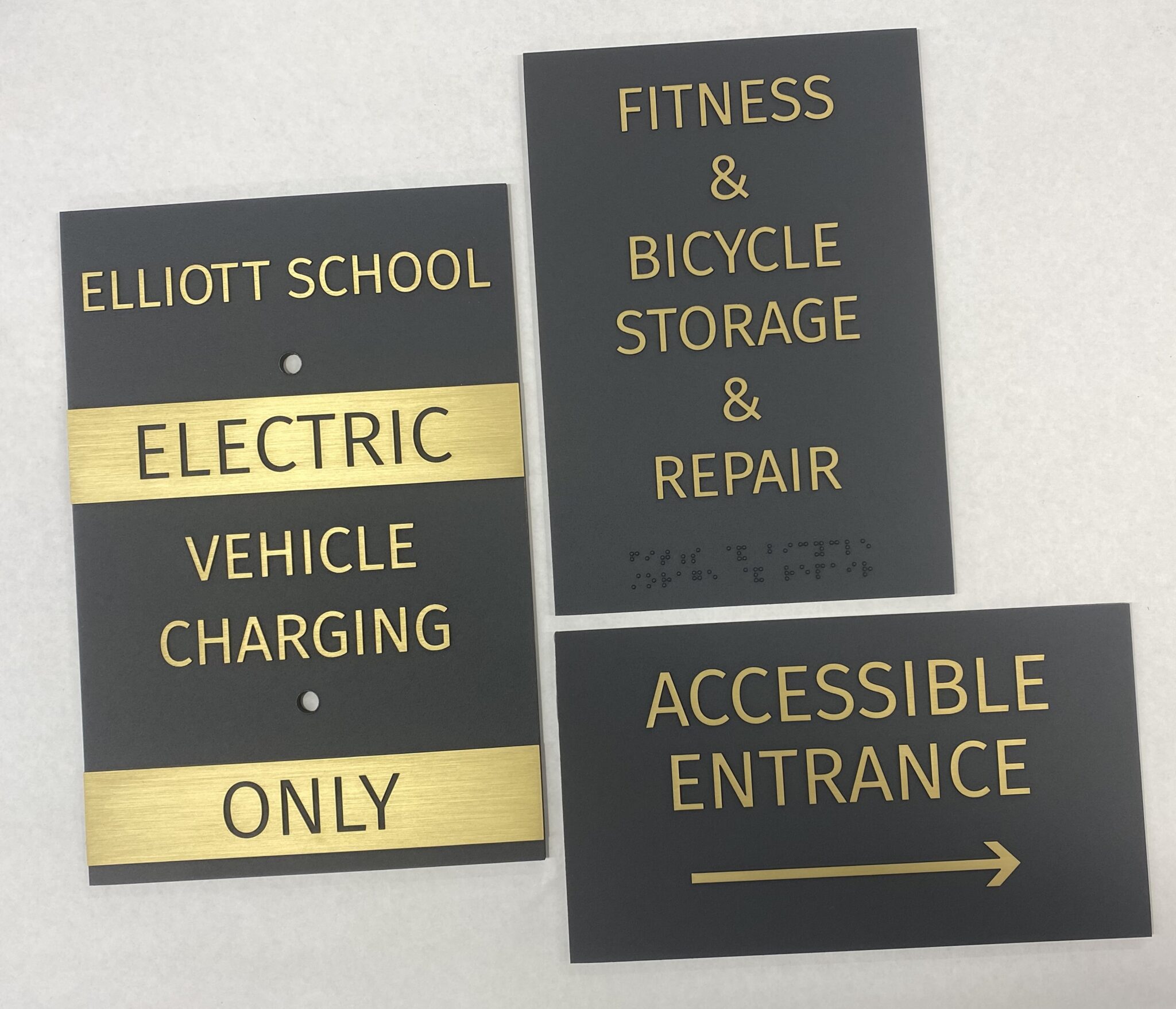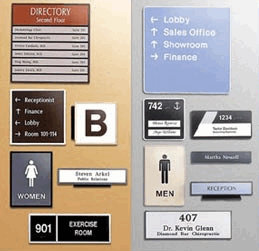The Effect of ADA Signs on Neighborhood Availability
The Effect of ADA Signs on Neighborhood Availability
Blog Article
Discovering the Secret Functions of ADA Signs for Boosted Ease Of Access
In the realm of access, ADA indications offer as silent yet effective allies, ensuring that areas are accessible and inclusive for people with disabilities. By incorporating Braille and responsive elements, these indications damage barriers for the aesthetically impaired, while high-contrast shade systems and readable fonts cater to varied visual requirements.
Importance of ADA Compliance
Making certain compliance with the Americans with Disabilities Act (ADA) is essential for cultivating inclusivity and equivalent access in public areas and offices. The ADA, enacted in 1990, mandates that all public facilities, employers, and transport solutions suit individuals with impairments, guaranteeing they appreciate the same legal rights and possibilities as others. Compliance with ADA standards not only satisfies lawful commitments but likewise improves a company's online reputation by showing its dedication to variety and inclusivity.
One of the key facets of ADA conformity is the application of easily accessible signage. ADA signs are designed to make certain that people with impairments can easily browse with rooms and structures.
Furthermore, sticking to ADA laws can minimize the threat of possible fines and legal effects. Organizations that fall short to abide by ADA standards may face suits or penalties, which can be both monetarily challenging and harmful to their public image. Hence, ADA conformity is essential to fostering a fair atmosphere for every person.
Braille and Tactile Aspects
The consolidation of Braille and responsive aspects into ADA signage embodies the principles of accessibility and inclusivity. These attributes are essential for people who are visually impaired or blind, allowing them to browse public spaces with higher freedom and confidence. Braille, a responsive writing system, is essential in supplying created information in a style that can be conveniently perceived through touch. It is commonly placed underneath the equivalent text on signage to make sure that people can access the information without aesthetic aid.
Tactile elements extend beyond Braille and include increased personalities and signs. These parts are designed to be discernible by touch, allowing individuals to determine space numbers, bathrooms, departures, and various other vital locations. The ADA sets certain guidelines concerning the dimension, spacing, and positioning of these responsive components to optimize readability and ensure uniformity throughout various settings.

High-Contrast Color Schemes
High-contrast color pattern play a crucial function in enhancing the presence and readability of ADA signs for individuals with visual problems. These plans are important as they make best use of the distinction in light reflectance between text and history, making sure that indications are easily noticeable, even from a range. The Americans with Disabilities Act (ADA) mandates the usage of details color contrasts to suit those with restricted vision, making it an important aspect of compliance.
The efficacy of high-contrast colors hinges on their capacity to stand apart in numerous illumination problems, including poorly lit environments and areas with glare. Commonly, dark text on a light history or light message on a dark background is utilized to attain optimal contrast. Black message on a yellow or white background supplies a raw aesthetic pop over here difference that aids in quick acknowledgment and understanding.

Legible Fonts and Text Size
When taking into consideration the layout of ADA signs, the choice of readable typefaces and suitable message dimension can not be overemphasized. The Americans with Disabilities Act (ADA) mandates that fonts should be not italic and sans-serif, oblique, manuscript, extremely attractive, or of uncommon kind.
The dimension of the message also plays a critical role in access. According More about the author to ADA guidelines, the minimum message elevation ought to be 5/8 inch, and it should raise proportionally with watching range. This is especially important in public rooms where signage requirements to be read promptly and precisely. Consistency in message size adds to a natural visual experience, assisting individuals in navigating settings effectively.
Moreover, spacing between letters and lines is integral to readability. Appropriate spacing stops characters from appearing crowded, boosting readability. By adhering to these criteria, designers can considerably boost availability, making sure that signage serves its desired purpose for all people, regardless of their aesthetic capabilities.
Efficient Positioning Strategies
Strategic placement of ADA signage is important for optimizing access and ensuring compliance with legal criteria. ADA standards state that indications must be placed at an elevation between 48 to 60 inches from the ground to ensure they are within the line of view for both standing and seated people.
Additionally, indicators need to be put adjacent to the lock side of doors to allow simple identification prior to entrance. Uniformity in indicator positioning throughout a center improves predictability, reducing complication and improving total user experience.

Verdict
ADA signs play an essential duty in promoting availability by incorporating attributes that address the needs of people with handicaps. These aspects jointly cultivate an inclusive environment, underscoring the importance of ADA conformity in making sure equal access for all.
In the world of access, ADA indicators serve as silent yet effective allies, making certain that areas are comprehensive and accessible for individuals with disabilities. The ADA, established in 1990, mandates that all public facilities, employers, and transport solutions accommodate people with specials needs, ensuring they delight in the same civil liberties and chances as others. ADA Signs. web ADA signs are made to make sure that individuals with handicaps can quickly navigate via areas and buildings. ADA standards state that indicators must be mounted at an elevation between 48 to 60 inches from the ground to ensure they are within the line of view for both standing and seated individuals.ADA signs play an essential function in promoting availability by integrating attributes that deal with the demands of people with disabilities
Report this page